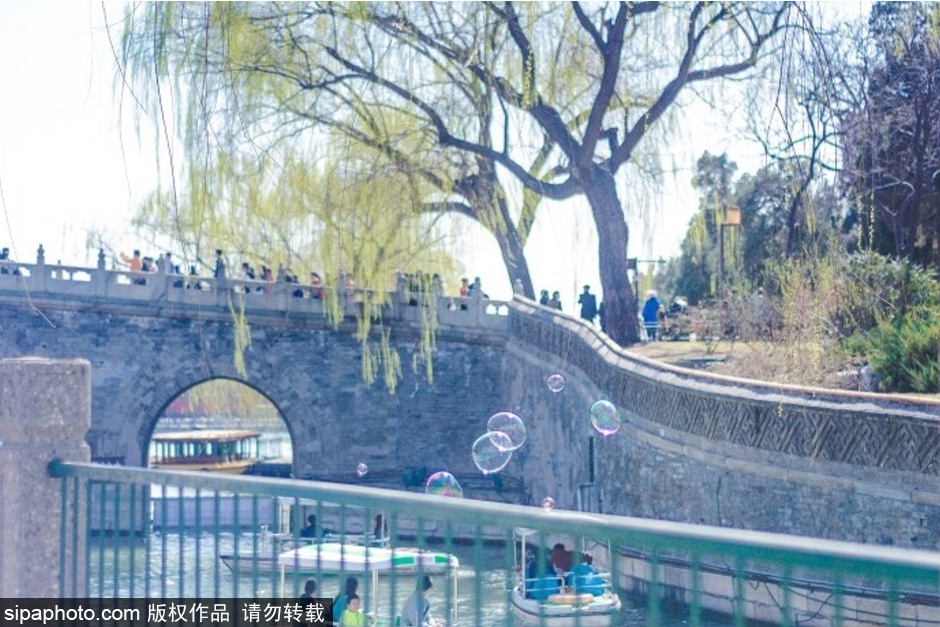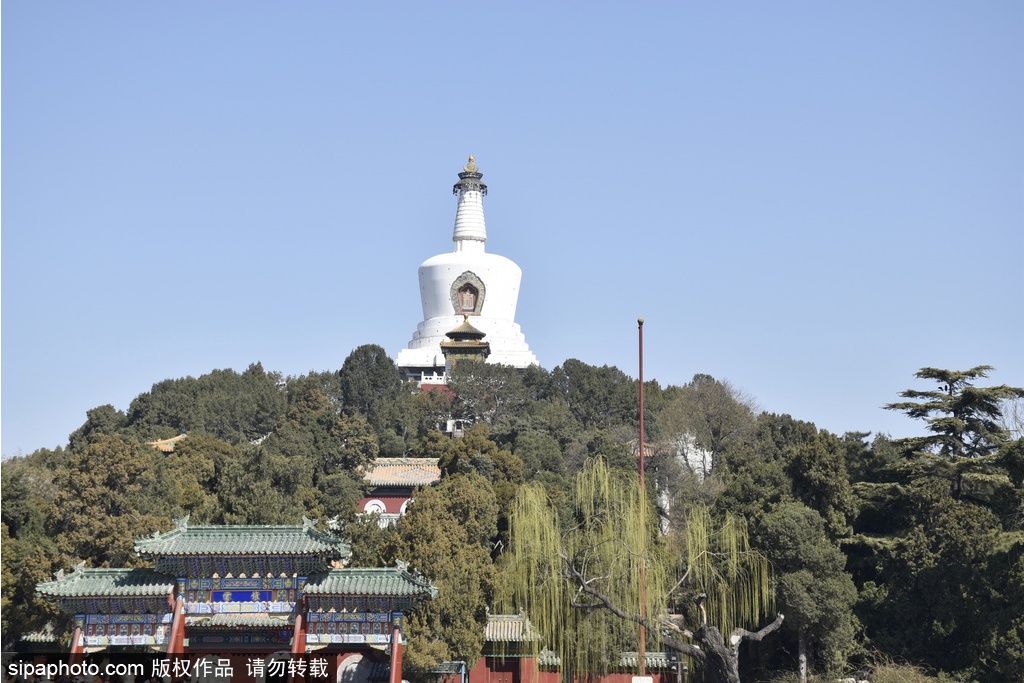The Beihai Park sits at the center of Beijing, on the west side of Jingshan, the northwest side of the Forbidden City, and is one of the three “seas” along with Zhonghai (“central sea”) and Nanhai (“southern sea”). The former imperial garden was built around Beihai, covering 71 hectares, with a water area of 583 mu (38.89 hectares) and a land area of 480 mu (32.02 hectsres). It used be the premises of detached palaces in the Liao, Jin and Yuan dynasties, and imperial gardens in Ming and Qing dynasties. It is one of the oldest, the most complete, comprehensive and representative imperial gardens in China. Since 1925, the place has been open to the public as a park.

It is a masterpiece in the history of Chinese gardening, consisting of Qionghua Islet, East Bank and North Bank. On the Qionghua Islet there are lush groves and exquisite architectures including pavilions, platforms and pavilions. The White Pagoda on the top of the mountain becomes the symbol of the park. The famous attractions, such as Haopujian (the House between Moats), Huafangzhai (the Painted Boat Studio), Tianwangdian (the Hall of Heavenly Kings), Kuaixuetang (Hall of the Swift Snow), Jiulongbi (the Nine Dragon Screen), Wulongting (the Five Dragon Pavilion) and Xiaoxitian (the Little Western Heaven), are dotted with lakeside willow trees. Beihai’s gardening is a combination of the grandeur of the Northern gardens with the delicate elegance that characterize private gardens in the south. At the same time it combines the pomp and splendor of imperial gardens as well as the solemn gravitas of religious buildings, bringing together all these dazzling elements into a harmoniously unified whole. It is a jewel in Chinese gardening art.

In 2017, Beihai Park has organized a “Beihai Stone Sculpture and Carving Exhibition” for the first time, which collected, reviewed, studied and selected broken stone relics scattered in the park to explore a sustainable model combining protection, exhibition and research of cultural relics while fully demonstrating the charm of Chinese stone carving. Visitors are invited to transcend time and space to communicate with the historical and cultural context behind each exquisite object and be inspired by the glory of the garden’s past.
Add: No.1 Wenjin Street, Xicheng District



